Hidden Spaces: The tiny cemetery
At the Arboretum, graves linked to the Revolution
Hidden Spaces is part of a series about lesser-known spaces at Harvard.
Each July 4, as night falls, the Roslindale neighbors who live near Peters Hill in Harvard’s Arnold Arboretum walk to the top. Someone brings a radio, and they listen to the Boston Pops Orchestra play the “1812 Overture” while they watch the fireworks burst brilliantly over the Charles River. Near the base of the hill, among tall trees and along narrow dirt paths, lies a little-known cemetery containing the remains of veterans of the American Revolution and early settlers — an ideal place for pondering the meaning of the nation’s birthday.
The little cemetery, hidden at the far end of the 265-acre Arboretum, holds several headstones and a crypt and was once part of the Walter Street “Berrying” Ground. The “Jamaica End” settlers of the early 1700s belonged to the distant Roxbury town church on Meeting House Hill. The long walk to services was especially difficult during the cold winters, so a group of 44 petitioned to establish a second parish. In 1711 when their petition was ignored, they quietly broke away. Alongside their Walter Street church they built the cemetery, now part of the Arboretum, which was established in 1872.
Under giant Hawthorn trees are the crude, chipping headstones etched with old New England names like Baker, Weld, and Child. The epitaph on the stone of Capt. John Baker underscores the importance of religion to the early Americans. The inscription reads, “Life is uncertain, Death is sure, Sin is the wound, Christ is the cure.” One of the earliest markers is a double headstone for Grace and Benjamin Child, husband and wife. Nearby is the stone marking Benjamin’s brother, Joshua, whose wife Elizabeth is also buried in the area. (According to the 1961 edition of the Arboretum publication “Arnoldia,” Joshua and Benjamin were brothers, born a year apart and baptized the same day, and Elizabeth and Grace were sisters. Each couple had 12 children.)
Around 1902, when the city of Boston was widening Walter Street, workers found 28 other bodies. A marker above the sidewalk reads, “In memory of Soldiers of the Revolution who died in the hospitals at Jamaica Plain and were buried in this lot. 1775-1776.” One account is that the soldiers were killed fighting in the Revolution; another is that they died from smallpox while stationed at nearby Loring-Greenough House, which had been converted to a hospital.
The ancient burial site is a hidden space within a hidden space, far afield from the main Harvard campus. Arnold Arboretum is the second-to last-link in Boston’s Emerald Necklace, a series of connected parks. The views of Boston from this southernmost tip of the park are remarkable. So are the stories of those buried in the tiny cemetery.
Hidden Spaces: Arboretum cemetery Photos by Rose Lincoln/Harvard Staff Photographer
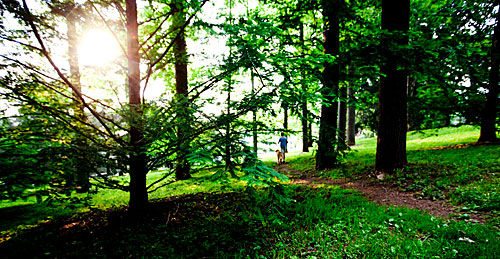
Path to paradise
The pathway from Walter Street at the entrance to Peters Hill in Harvard University’s Arnold Arboretum leads to an 18th-century burial ground of early settlers and Revolutionary War soldiers.
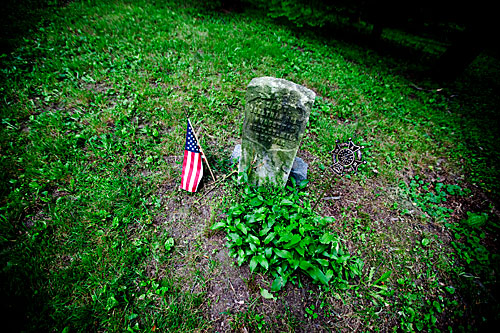
‘Rev. War’
The weathered stone of Capt. Jonathan Hall is decorated with a small contemporary American flag and a 1776 commemorative marker. Hall fought against the British and the words “Rev. War” are crudely engraved on his stone.
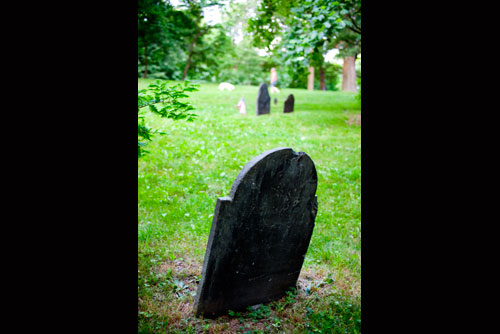
Age of leniency
An aging headstone no longer stands at attention, finally permitted some leniency.
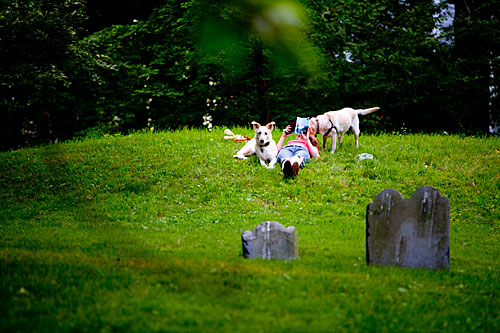
Dog days
Dogs and people share the grassy lawn on Peters Hill where early settlers are laid to rest.
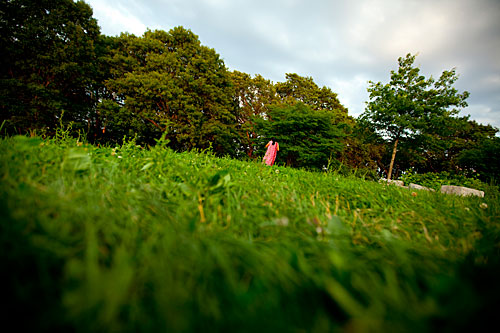
From hill to orchard
A large expanse of lawn at the top of Peters Hill dips down to an apple orchard.
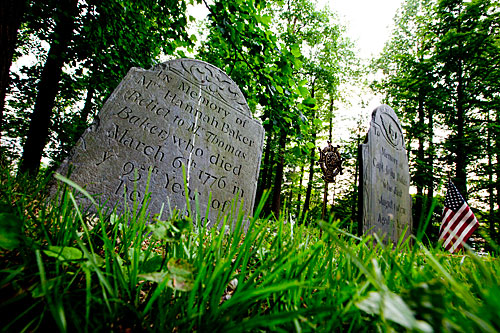
Words of wisdom
In 1776, Hannah Baker, who lived until the age of 95, was buried beside her husband, John, who had died at the age of 83. His epitaph reads: “Life is uncertain. Death is sure. Sin is the wound. Christ is the cure.”
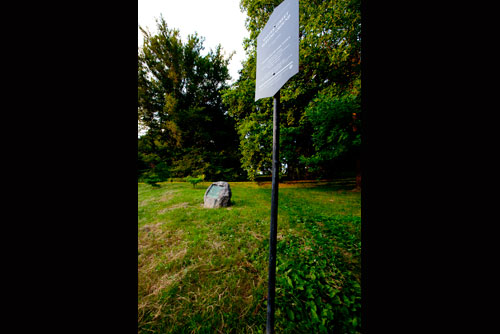
Sacred spot
The ancient burial site is a hidden space within a hidden space, far afield from the main Harvard campus.
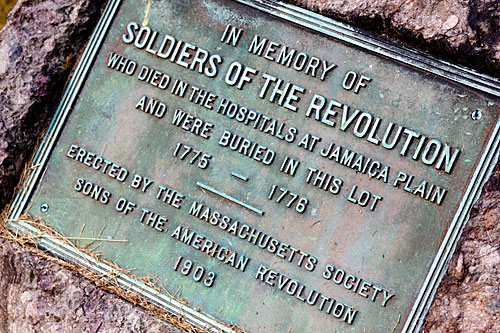
Remains of the day
The remains of 28 Revolutionary War soldiers were discovered in this area around 1902 and a marker was erected at the base of Peters Hill in remembrance.
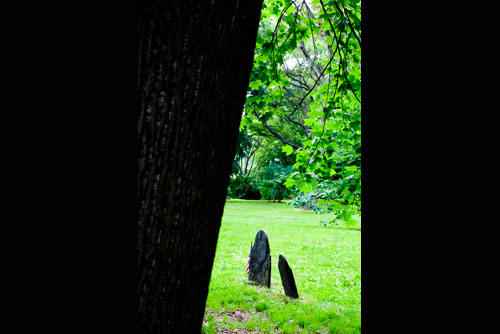
Wooden frame
Trees frame two aged markers at the 18th-century burial site on Peters Hill.
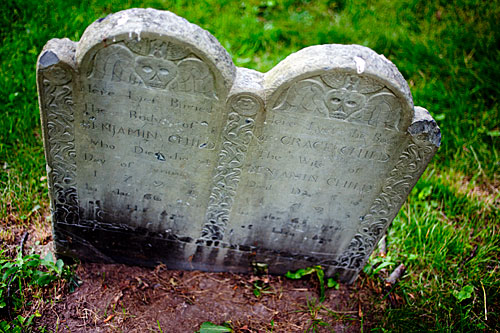
Side by side
Grace and Benjamin Child, husband and wife who died just over a year apart in the 1790s, are buried side by side under a double headstone on Peters Hill.
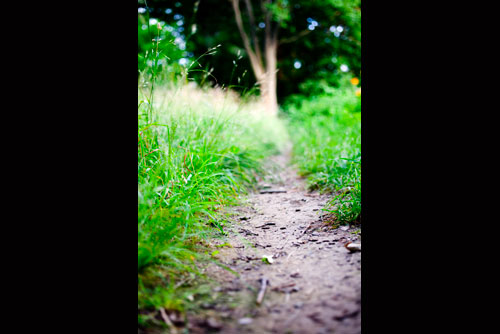
Walk this way
A narrow and natural pathway borders the burial site.
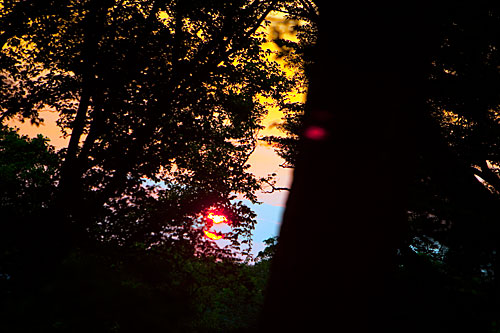
Setting sun
The sun sets through the trees on Peters Hill in Harvard’s Arnold Arboretum.



